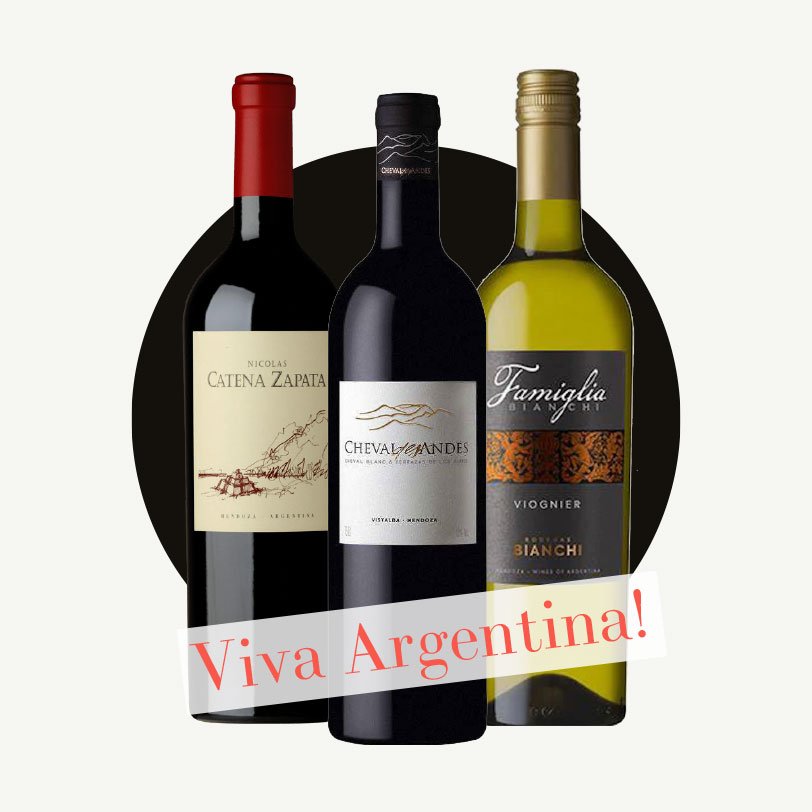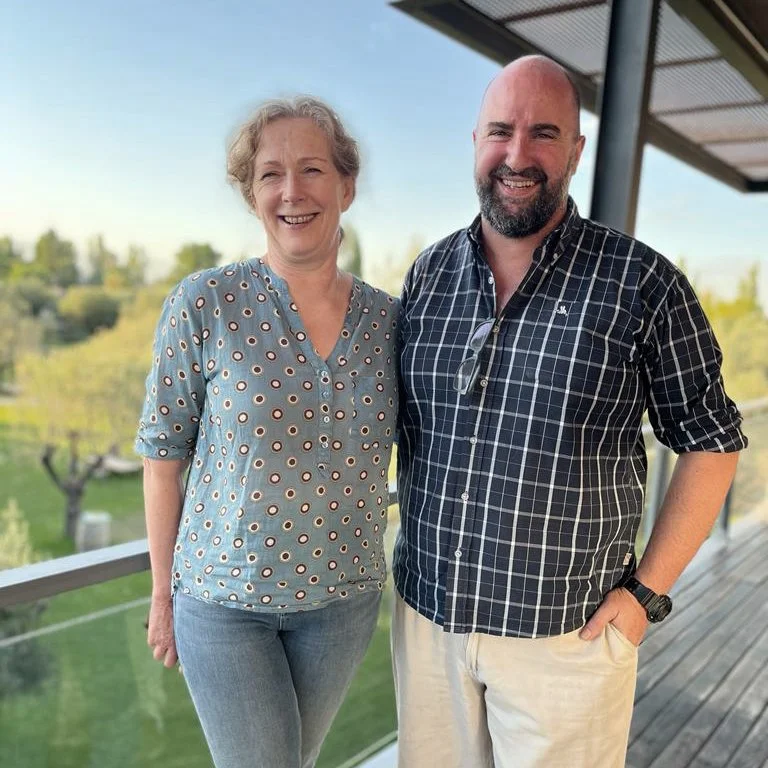▻ Viva Argentina! – Part Two
What’s new in Argentina:
In conversation with Juan Marco at Finca Decero, Sergio Casé at Trapiche and Silvio Alberto at Bodegas Bianchi
Episode Summary:-
Sarah Kemp visits three of Argentina’s leading wine producers, Juan Marco at Finca Decero, Sergio Casé at Trapiche and Silvio Alberto at Bodegas Bianchi, and discusses the new and different directions they are taking. First stop: Finca Decero, where Juan Marco explains why at Finca Decero they believe in the importance of single vineyards. The winery was started in 2001 and the first bottling was 2006. While other wineries produced single-vineyard wines, Finca Decero was the first to devote their entire production to single vineyards. Based in Agrelo, their Remolinos Vineyards are on alluvial and colluvial soils. “It is a tapestry of soils,” Juan Marco explains. World-renowned soil expert Pedro Parra helped them understand their soil (over 1,000 different soil pits have been dug in the Remolinos Vineyards). “The 1,000 different soil pits have allowed us to make these smaller pieces of lands and separate wines,” says Juan.
““I think most of the industry these days are working to one objective, trying to understand our soils and climate.” ”
Sarah’s next stop is one of Argentina’s oldest and most famous wineries. Trapiche was founded in 1883, and is one of Argentina’s best-known names. They have been producing award-winning Malbecs from Mendoza for decades, but their new project is the Costa & Pampa range of wines at Chapadmalal, Sarah discusses it with their chief winemaker Sergio Casé. Sergio explains that Trapiche had always been known as pioneers, and that in 2010 they decided to plant at Chapadmalal, 18km from Mar del Plata, the beautiful seaside resort close to Buenos Aires. The oceanic influence brings totally different challenges from the mountain wines Trapiche are used to making in Mendoza. Sergio talks about the 27 hectares of different varieties planted, which include Sauvignon Blanc, Chardonnay, Pinot Grigio, Riesling, Gewurztraminer, Albarino and Pinot Noir. The climate is very windy, cool and humid and the vineyards are all dry-farmed. “We depend on nature for water,” he says, and reveals how thrilled he is with the project. While Trapiche were the first to pioneer this new region, which now has IG status, several other producers have followed. Expect to hear a lot more about Argentina’s new oceanic region.
While visiting Sergio Casé at Trapiche, she noticed a lot of concrete eggs. This was to become a familiar sight on her trip. At Bodega Bianchi, she spoke with Silvio Alberto, their chief winemaker, who started experimenting with concrete and now is using amphoras. Silvio joined the family-owned winery five years ago, and with the family’s backing started to change the style of the wines to reduce the oak and increase the terroir characteristics. Sarah and Silvio discuss the tasting of the same wine from the oak barrel and from the amphora. Sarah finds much more energy and a crisper definition of the fruit from the wine in the amphora and Silvio agrees. He believes that Malbec benefits from less oak treatment and currently he is blending wine which is vinified in the amphora with wine which is vinified in the oak barrel. He hasn’t ruled out an Enzo Bianchi wine (their flagship wine) made entirely in an amphora.
While Malbec still is the grape most wine lovers think of when they think of Argentina, Sarah finds there are many others to enjoy. Her big surprise was an unoaked Viognier from Bodega Bianchi, which was her discovery of the trip. Silvio explains how they pick the Viognier two weeks apart, the first for the white flowers, citric notes and acidity and the second picking for the more tropical notes. The wines are then blended; Sarah thinks it might be a new flagship wine for Bodega Bianchi.
Running Order:-
-
0.00 – 8.44
“We wanted to provide consumers with the ability to try an origin." – Juan Marco, Finca Decero
– Juan Marco, CEO of Finca Decero, talks about why they decided to produce 100% single vineyard wines from the Remolinos Vineyard.
– The different types of soils at the Remolinos Vineyard.
– Dividing the blocks into smaller parcels and the 1,000 soil pits in the vineyard. -
8.45 – 14.45
“Close to the Atlantic Ocean, we have totally different wine.” – Sergio Casé, Trapiche
– Sergio Casé, chief winemaker at Trapiche, talks to Sarah Kemp about their Costa & Pampa wines made near the ocean.
– The founding of the Chapadmalal vineyard in 2010 and the differences with farming in Mendoza.
– The varieties planted in Chapadmalal and their characteristics. -
14.45 – 21.36
“Cabernet Sauvignon supports more the oak characters, the fruit of Malbec is not the same.” – Silvio Alberto, Bodega Bianchi
– Silvio Alberto talks about the difference between vinifying Malbec in oak and amphoras.
– Sarah and Silvio discuss the tasting of the same wine from the amphora and the oak barrel.
– How amphoras amplify terroir expressions. -
21.37 – 38.37
“My surprise wine of my trip to Argentina” – Sarah Kemp
– Silvio Alberto talks about his unoaked Viognier.
– Growing Viognier at the foot of the Andes.
– Why at Bodega Bianchi they pick Viognier in two tranches, and how it affects the wine.
RELATED POSTS
Keep up with our adventures in wine









Sebastian Zuccardi is one of South America’s most dynamic winemakers. Sarah Kemp meets up with him to taste his new vintages and finds out from him the four new revolutions happening in Argentina’s vineyards.